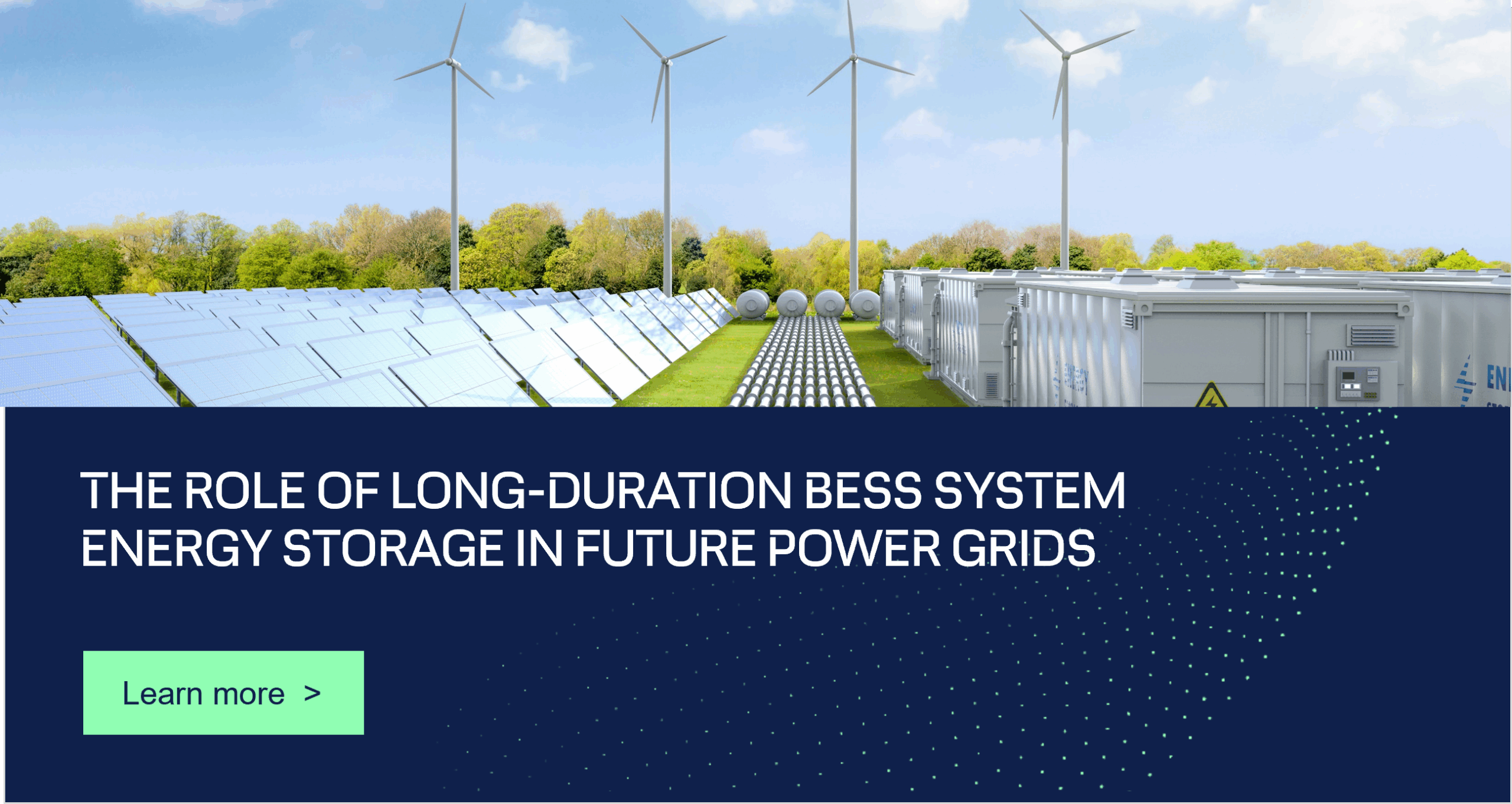When it comes to solar and PV panel efficiency, solar intermittency presents a major challenge. The sun is not visible for 24 hours per day aside from at certain times of year at specific latitudes. As a result, utilities cannot depend solely on solar power to supply electricity to their customers. While daylight energy can still be used on cloudy days, the electricity produced naturally varies throughout the day and across different seasons. Wind energy at the same time presents challenges because it relies on wind availability, which can be intermittent and unpredictable.
Large-scale energy storage solutions are a relatively recent development in the renewable energy space. Unlike wind turbines or solar panels, which are visually noticeable, energy storage systems (such as battery farms) are often less visible and don’t get the same attention. Many conversations about the renewable energy industry focus on energy generation (such as solar and wind power), and there is often less awareness of storage, despite its critical role in stabilizing renewable energy systems.
Energy storage is increasingly recognized as a key element of the renewable energy landscape. According to the DNV ETO report of 2024, battery storage, PV and solar are growing much faster than forecast.
How do battery energy storage systems operate?
Storage power plants, such as Battery Energy Storage Systems (BESS), play a vital role in balancing energy supply and demand to stabilize power grids. BESS systems store excess energy generated by renewable sources like solar and wind in large-scale batteries, enabling that energy to be discharged when production drops or demand spikes. Both technologies address the intermittency of renewables, ensuring a reliable and consistent power supply while supporting the transition to a sustainable energy future.
What are some of the challenges battery energy storage systems face?
The energy storage sector holds immense potential to drive renewable energy growth and sustainability. While it faces challenges, including investment gaps, regulatory hurdles, initial costs, and technological limitations, these obstacles also represent opportunities for innovation and collaboration.

What are the is the expected future of energy storage technologies?
The DNV Energy Transition Outlook 2024 tells us that long duration energy storage technologies like flow batteries, compressed air or gravity-based solutions look set to enter the market at scale in the 2030s.
BESS storage plays a crucial role in ensuring a steady supply of renewable energy to power systems, even during periods without sunlight or wind. It offers a flexible solution to enhance grid stability, improve power quality, and support the expansion of renewable energy sources.
What regulations have recently been introduced that will impact on energy storage?
- European Union: The EU’s Electricity Market Design Directive recognizes energy storage as a distinct asset class and aims to reduce barriers to its deployment. The directive mandates fair rules for network access and competitive procurement of balancing services. Additionally, the REPowerEU initiative is pushing for rapid expansion of solar and wind assets, creating deeper market opportunities for storage.
- Key Dates in EU Regulation: The EU Gas Storage Regulation, initially adopted in June 2022, requires Member States to fill storage sites to 90% capacity by November each year. This regulation has been extended until 2027 to ensure energy security.
- United States: The Inflation Reduction Act (IRA) has been significant for energy storage. It introduced a 30-50% Investment Tax Credit (ITC) for standalone energy storage systems, accelerating renewable energy deployment. It is hoped that this policy will drive growth in the storage sector.
- China: Under its 14th Five-Year Plan, China has set a federal target of 30 GW of energy storage capacity by 2025. Provincial targets are expected to exceed this, making China a leader in storage deployment.
GPM’s on-site solutions for energy storage
According to Juan Carlos Arévalo, CEO of GreenPowerMonitor, a DNV company (GPM), “the future grid runs on energy storage and hybrid systems. We are committed to driving innovation to meet the needs of both our customers and the industry. Working together, by advancing storage systems to reduce reliance on fossil fuels during peak demand, we contribute to meaningful carbon emissions reductions.”
At GPM we have made significant advancements to our EMS (Energy Management System) and HEMS (Hybrid Energy Management System) which are now available.
- Energy Management System (GPM EMS): improving battery storage performance by optimizing energy dispatch, prolonging asset lifespan, and maintaining grid reliability.
- Hybrid Energy Management System (GPM HEMS): enabling seamless coordination between PV and battery storage in hybrid plants, optimizing internal power flow for efficiency, cost-effectiveness, and grid compliance.
Conclusion
As the renewable energy sector continues to expand, addressing challenges like intermittency and energy storage becomes critical to achieving a sustainable future. Long-duration energy storage solutions are essential tools for stabilizing power grids and meeting growing energy demands. By integrating diverse renewable technologies, such as solar, and BESS storage systems, hybrid plants offer a more reliable and efficient approach to energy generation.
While the energy BESS storage sector faces challenges, including high costs and regulatory hurdles, emerging technologies and supportive policies are paving the way for growth. Initiatives like the Inflation Reduction Act in the United States, EU directives, and China’s ambitious capacity targets highlight a global commitment to overcoming these obstacles.
At GPM we are ready to work with customers on BESS system storage and hybrid projects and have considerable experience and expertise in the management of renewable energy projects. We are deeply invested in how the market continues to evolve. Innovation is at the heart of this transformation, as we continue to develop advanced tools, such as GPM EMS and GPM HEMS to manage energy systems efficiently.
Discover our EMS and HEMS solutions for your project
Learn more about our latest product offering – to find out more about GPM EMS (Energy Management System), GPM HEMS (Hybrid Energy Management System) and GPM PPC (Power Point Controller) read our brochure.

